 |
|
| Extraction | Wisdom Teeth | Bonegraft | Sinus Lift | Ridge Augmentation | Nerve Reposition | Sedation Dentistry | Oral & Maxillofacial Surgery |
Wisdom Teeth
The last teeth to develop and erupt into the jaws are called the third molars. Third molars usually erupt in the late teen years, which coincides with passage into adulthood and is referred to by some as the age of "wisdom teeth".


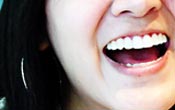
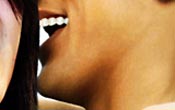




Unfortunately, the wisdom teeth are now usually trying to erupt into a jaw that is too small. The heavily processed diet of today does not produce the tooth abrasion or jaw development that we used to see. Modern dentistry has pretty much eliminated significant loss of permanent teeth at an early age. This leaves us with too many teeth and not enough jaw.
Wisdom teeth serve no useful function and will often cause damage because when a wisdom tooth becomes partially exposed through the gums it cannot be cleaned properly and can collect food debris, bacteria and plaque around itself. This can result in tooth decay, gum disease, infection and abscess of not only the wisdom teeth, but of the nearby molars and surrounding gum tissue. The molars in front of the wisdom teeth are sometimes lost because of cavities and gum disease caused by the inability to clean the wisdom teeth properly. Cyst formation and other destructive pathology are also seen around impacted wisdom teeth. There may be pain and swelling, or you may have no symptoms at all, even though the other teeth in your mouth may be at risk of damage.
If removal of the wisdom teeth is necessary, the procedure is recommended in the late teenage years, before the roots are completely formed. Surgical procedures in general are better tolerated when one is young and healthy, and the gum tissues tend to heal better and more predictably when young. Most people experience minimal disruption of their normal routines, and time off from work or school is usually minimal. At this point it is worth noting that the removal of wisdom teeth can be of great benefit to your ultimate oral and general health.
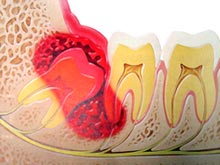
Wisdom teeth can be extremely problematic and more often than not I advise patients to have their wisdom teeth removed. However, not everyone has problems with their wisdom teeth. If you're genetically lucky, the jaws are long enough to accommodate the wisdom teeth in a proper erupted position. In this position, if they can be kept clean, they may be used.
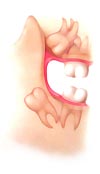
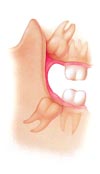
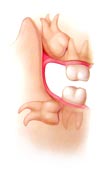
How and where your wisdom teeth are removed depends on whether your wisdom teeth are erupted or impacted and how deep the roots are. Surgery may take place in your dentist's or oral surgeon's office rather than in a surgical center or hospital. Your dentist or oral surgeon will review the recommended procedure with you so that you are comfortable with the procedure from the very beginning. You will also be given information about eating, medication, rest, driving, and other considerations for the periods before and after surgery.
Immediately after surgery your body sends blood to nourish the tooth socket and the
healing process begins. Simple pressure from a piece of gauze should control the bleeding and help a
blood clot to form in the socket. After surgery, you will rest while under
close observation as you recover from the anesthetic. Once
your doctor is satisfied with your recovery you will be able
to go home and relax. Within a day or two, soft tissue
begins to fill in the socket, aided by the blood clot. In
time, the bone surrounding the socket begins to grow,
eventually filling in the socket completely.
It is possible for you to heal more quickly and avoid
complications by simply following the instructions that your
dentist or oral surgeon gives you. However, if you
experience excessive bleeding or swelling, persistent and
severe pain, fever, or if you experience any reaction to
medications, please do not hesitate to call your dentist for
further advice. A follow-up examination may also be
scheduled to make sure that the socket is healing properly
and that your mouth is returning to a normal, healthy state.
Silom dental building Clinic offer you a service of stem cell collecting from your wisdom tooth.
We will send your teeth to the laboratory for stem cell isolation and storage in tooth cell bank.
This technology is from USA and we are the first place in Asia who provide this service.
HOME
l SERVICE
l DENTISTS
l TECHNOLOGY
l FACILITIES
l ABOUT US
l SITE MAP
PROMOTION
l PRICE&DURATION
l CONSULTATION
l FAQ
l LINKS
l MAP
l TESTIMONIALS
l OUR LAB
l RESOURCES
DENTAL BRACES
l TEETH WHITENING
l IMPLANT DENTISTRY
l ENDODONTICS
l OPERATIVE DENTISTRY
l SEDATION DENTISTRY
COSMETIC DENTISTRY
l PROSTHODONTICS
l PERIODONTICS
l ORAL SURGERY
l PAEDODONTICS
l GP & ORAL EXAM
l OCCLUSION
AIR-FLOW
l DENTAL LASER SYSTEM
l ENDODONTIC EQUIPMENT
l DENTAL UNITS
l OPERATING LAMP
l WHITENING SYSTEM
CT SCAN
l DENTAL MICROSCOPES
l NOBEL GUIDE
l STERILIZATION ROOM
l X-RAY
l ELECTROSURGICAL SYSTEM
l MINIPIEZON
DENTAL OFFICE
l DENTAL CLINIC
l COSMETIC DENTISTRY
l COSMETIC DENTIST
l TEETH BLEACHING
l TOOTH WHITENING
DENTAL CROWNS
l DENTAL IMPLANTS
l DENTAL TREATMENT
l DENTAL IMPLANT
............................................................................................................................. Copyright© 2004 SILOM DENTAL BUILDING. All Rights Reserved.
Local Call : 0 2636 9092-5, International Call : (+) 66 2636 9091, (+) 66 2636 9097
e-mail :silomdental@silomdental.com
Oral Surgery, Oral Surgeon, Oral & Maxillofacial Surgery, Ridge Aumentation, Nerve Reposition, Oral Syrgery Bangkok Thailand Dental